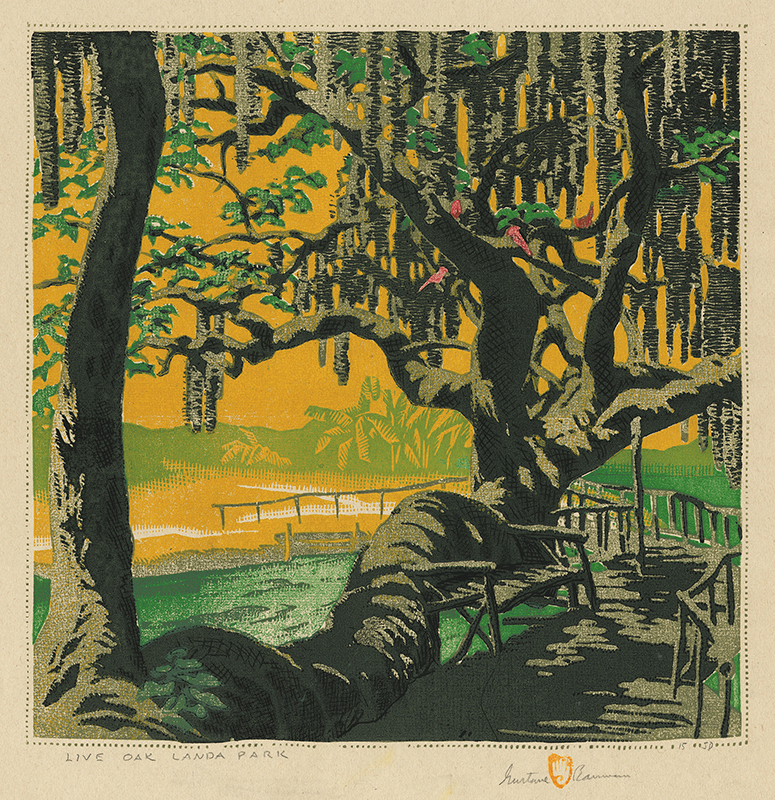
19th, 20th & 21st Century Fine Prints
707-546-7352 · fax 707-546-7924 · web: www.annexgalleries.com · email: artannex@aol.com
Live Oak Landa Park by Gustave Baumann

Live Oak Landa Park
Gustave Baumann
Live Oak Landa Park
Gustave Baumann
1881 - 1971 (biography)This impression comes from the third and heavily reworked edition, of which only a few impressions were printed. Baumann re-carved and proved the blocks with the expectation that a new edition would be printed before his retrospective was held in 1952. The dearth of impressions suggests that an edition never materialized, despite the fact this impression is inscribed "15-50".
The blocks for Live Oak Landa Park were originally carved in 1924 and the woodcut was first issued that year. In 1951 or 1952, Baumann recarved some of his blocks for Live Oak Landa Park and those impressions are numbered from an edition of 50, such as this impression. These are variant impressions with a yellow sky and gray-green trunks and branches. The changes to the blocks are noticeable in the shadows on the tree and those cast on the wood walkway, the wood railing along the walkway and on the shore, the water, the sky, and the distant landscape.
Landa Park is a major recreation spot encompassing 196 acres in the northwest section of New Braunfels, Texas. This large vintage oak still lives, but its structure has drastically changed since Baumann's rendition of it, and it is now protected from visitors. The benches are gone, as is the walkway around the tree. According to the plaque, this live oak is known as the Founder's Oak, as the tree began as a seedling in 1700 in a major campsite in a major campsite of Central Texas Indians. According to early settlers, the Native Americans left messages to those who followed by weighing down the upper stems of such young trees horizontally to show the direction in which they had traveled.
